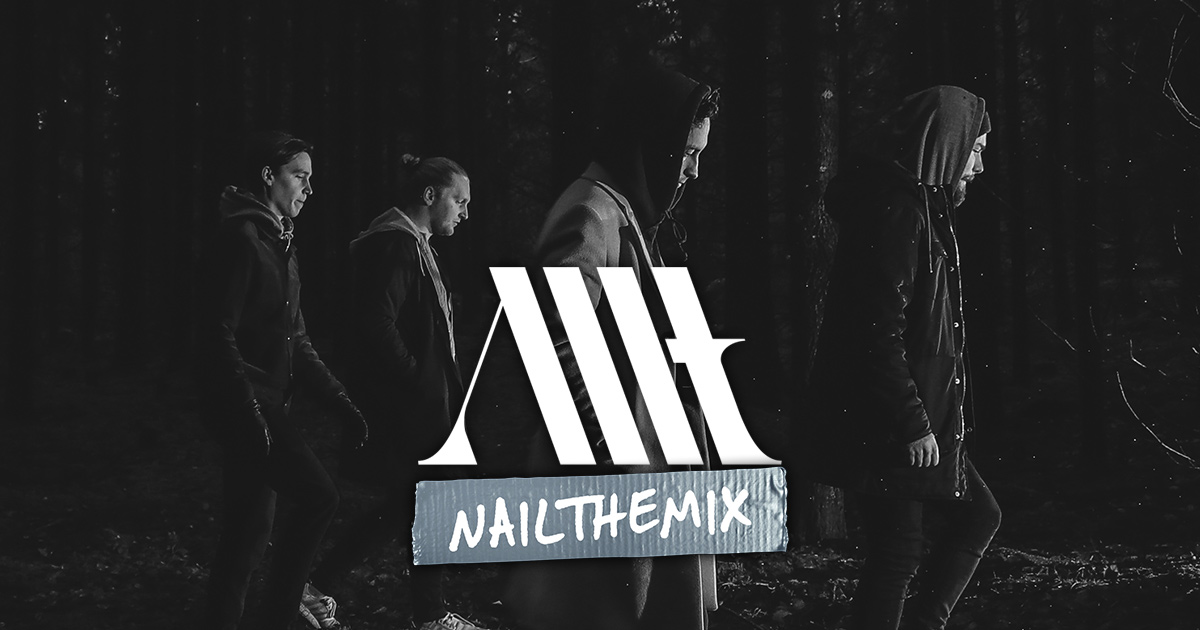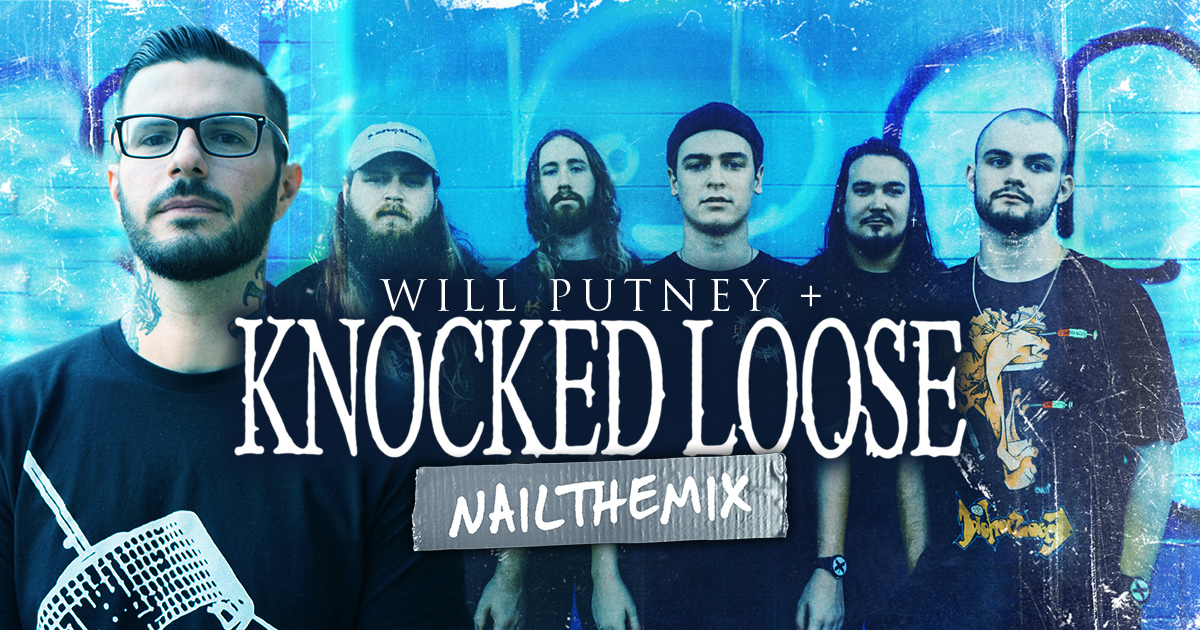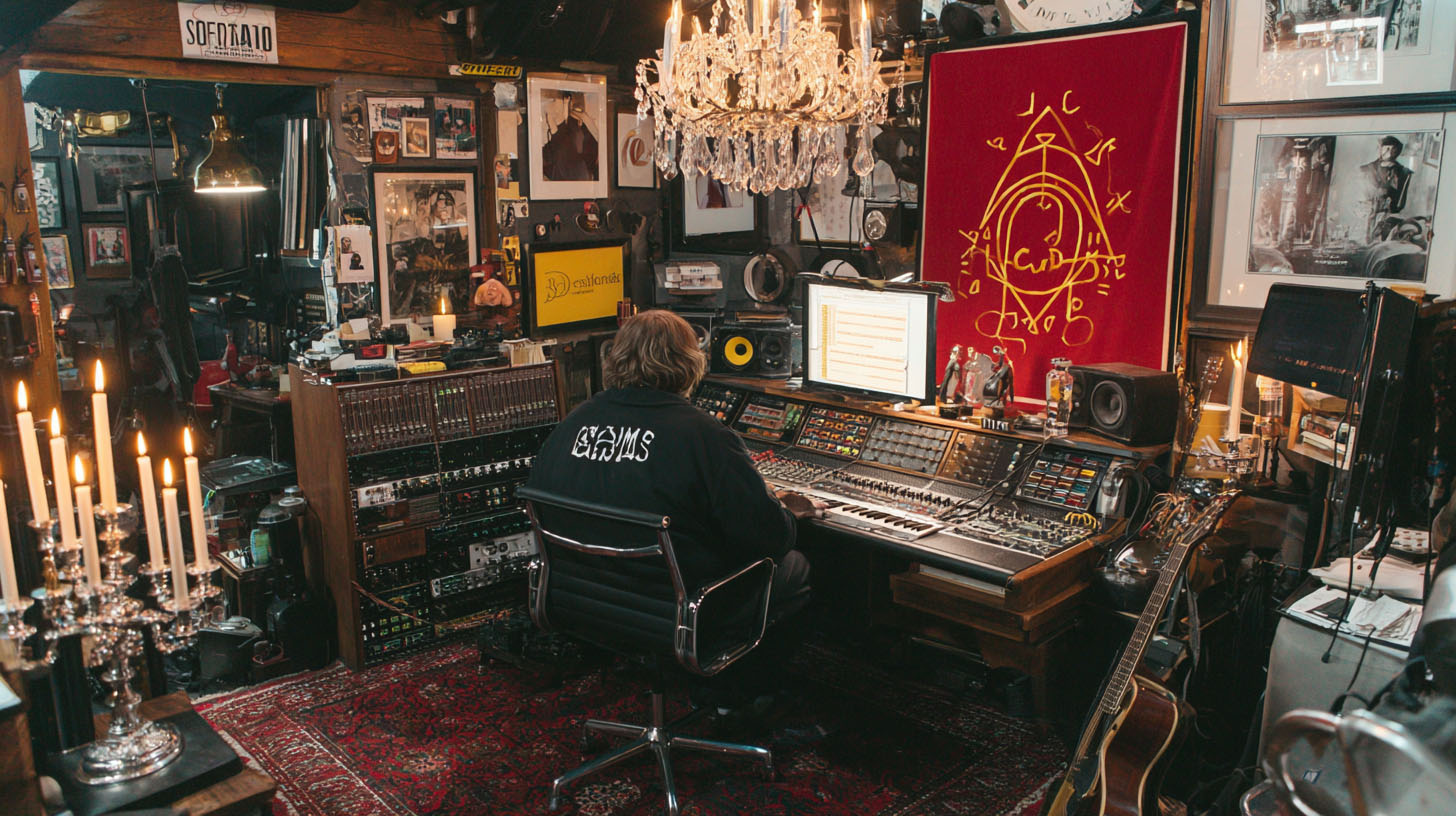
How To Blend A Kick Drum Sample w/ Buster Odeholm
Nail The Mix Staff
Getting a modern metal kick drum to sit right is a balancing act. You need the thunderous low-end and raw feel of a real kick, but you also need the relentless, machine-gun consistency to cut through a wall of guitars. So how do the pros do it?
Producer Buster Odeholm (Vildhjarta, Humanity’s Last Breath) tackled this exact challenge while mixing a track for the band Allt, and he dropped some killer knowledge on how to get the best of both worlds by blending samples. It’s not just about slapping a sample on top; the magic is in the details of phase, filtering, and processing.
Let’s break down Buster’s workflow for building a massive, articulate kick tone.
The Core Philosophy: Dynamic Feel Meets One-Shot Punch
The foundation of this technique is blending two distinct kick sounds: a dynamic, more “real-sounding” kick sample and a heavily processed, consistent one-shot.
- The “Real” Kick: This provides the human element. It has velocity variations and a natural feel that keeps the performance from sounding robotic.
- The One-Shot: This is your consistency workhorse. It’s a single, perfectly processed kick hit that provides the sharp transient and reliable low-end punch on every single hit, especially during fast-blast beats or double-kick runs where a dynamic kick might get lost.
The goal is to blend them so the real kick is still the dominant character of the sound, while the one-shot provides a powerful, supportive backbone. If you can clearly hear the static, “clicky” sound of the one-shot on fast parts, it’s probably too loud.
Nailing Phase Alignment: The Key to a Solid Low End
Here’s where things get technical, and it’s arguably the most important step. If your two kick samples are out of phase, they’ll work against each other, canceling out crucial frequencies and leaving you with a weak, hollow sound. Buster demonstrated a common pitfall and a much more reliable solution.
The Problem with Pre-Bounced Samples
Initially, Buster tried manually aligning a bounced one-shot audio file against the real kick track. This can be a nightmare. Why? Because the waveform of a dynamic kick changes slightly with every hit. Harder hits might have a a slightly different starting point in the low-end frequencies than softer hits. This means even if you line them up perfectly on one hit, they could be out of phase on the next.
A great way to check is to listen for what you lose when you combine them. If the low-end suddenly thins out or a frequency range vanishes, you’ve got a phase problem.
The Trigger Solution: Gaining Precision Control
Instead of fighting with audio files, Buster switched to a more powerful method: using a drum replacement plugin like Slate Trigger. This is the secret to getting tight, consistent phase alignment. By loading the one-shot sample into Trigger, you gain immense control over how it gets triggered.
Filtering the Trigger Signal
This is the golden nugget. Inside Trigger, Buster used the low-cut filter on the detection signal, setting it to around 300Hz. This tells the plugin to ignore the boomy, shifting low-end of the real kick and only listen for the sharp, consistent “thwack” of the beater hitting the drum head. By triggering off this transient, the one-shot sample is placed perfectly in time with every single hit, locking the phase relationship.
Fine-Tuning with Phase Flip and Dynamics
With the triggering now rock-solid, the final step is to use the plugin’s phase-flip button to get the kick samples perfectly in sync. From there, you can use the dynamics controls within Trigger to decide how much of the original performance’s velocity you want the one-shot to follow. For a super-consistent sound on fast parts, you can turn the dynamics down, and even automate this setting for different sections of the song.
Processing the Blended Kick Bus
Once your samples are blended and in phase, it’s time to shape the combined sound with EQ and compression.
Strategic EQ Before and After Blending
Buster’s approach to EQ is both simple and incredibly smart.
- Initial Filtering: He starts by putting a high-pass filter on both the real kick and the one-shot at around 35Hz. This cleans up useless sub-frequency rumble and tightens the low-end without sacrificing power.
- Boosting the Real Kick: Here’s a pro move. Instead of making the already clicky one-shot even brighter, Buster adds top-end EQ to the real kick sample only. This enhances the natural attack and “beater” sound from the more organic sample, giving you a high-end that feels more authentic.
Smart Compression for Punch and Control
For compression, Buster uses it to solve a specific problem. During fast double-kick parts, low-end frequencies can build up and turn into a muddy mess. He uses a multi-band compressor just to clamp down on the low-end during these sections, keeping the kick tight and defined without squashing the life out of it during slower, heavier grooves.
His workflow is often to apply compression first, and then do his final EQ tweaks after, so he’s reacting to how the compressor is changing the sound.
Creating Space with a Kick Room Send
To give the kick some dimension and help it sit in the mix, Buster sets up a separate “kick room” send. He EQs this send heavily, likely using a tool like FabFilter Saturn for some saturation and filtering. The goal isn’t to hear a distinct reverb, but to create a sense of “air” and a subtle tail that follows the initial transient. This gives the kick its own space without muddying up the direct punch of the main sound.
Learn the Pro Workflow from Start to Finish
These techniques—blending samples, using trigger filtering for phase, and strategic processing—are the kinds of details that separate a good mix from a truly great one. They are the building blocks for a massive, modern metal drum sound.
Applying these tips can instantly upgrade your kick tones. But imagine seeing how Buster Odeholm takes these foundational sounds and builds an entire world-class mix around them. On Nail The Mix, you can do exactly that.
Allt on Nail The Mix
Buster Odeholm mixes "Rupture"
Get the Session
When you join, you don’t just get tutorials; you get the raw, unedited multi-tracks from bands like Born of Osiris, Allt, and Oceano, and you get to watch the original producer mix them from scratch, explaining every single move. See how Buster makes these kicks sit with bass, how he carves out space against a dense guitar wall, and all the automation he uses to bring the track to life. Stop guessing what the pros are doing and see for yourself.
If you’re ready to move beyond presets and truly unlock your sound, this is your chance to learn directly from the best in the business. Check out the Born of Osiris, Allt, and Oceano session and see the full picture of how these crushing mixes are made.
Get a new set of multi-tracks every month from a world-class artist, a livestream with the producer who mixed it, 100+ tutorials, our exclusive plugins and more
Get Started for $1






